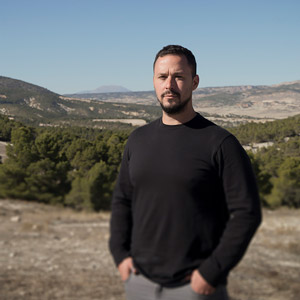
540 x 120 x 120". Site-specific installation. Ringling brothers train car. Wood, polished aluminum, polished cast iron, forged steel, vinyl-coated aircraft cable, paint, lighting. Commissioned by the International Sculpture Center for the 8th International Conference on Contemporary Cast Iron Art. 2018

540 x 120 x 120". Site-specific installation. Ringling brothers train car. Wood, polished aluminum, polished cast iron, forged steel, vinyl-coated aircraft cable, paint, lighting. Commissioned by the International Sculpture Center for the 8th International Conference on Contemporary Cast Iron Art. 2018
Artist Statement
When my Jewish parents bought our first home in the suburbs, there was a swastika scrawled inside of it. They painted over it, and did not speak of it again until I was an adult.
The place was never big enough for all of us, and at one point, it had been even smaller. A rich family’s vacation home hastily converted into a poor family’s permanent residence. This suburban American neighborhood was never made for us. Our heritage was hidden beneath white skin and Irish surname, and we slipped through the white picket gates, past the keepers of an unspoken agreement that prevented access to those deemed undesirable due to their color or belief system. “That was the way it had always been”.
There was a line of old paint where what used to be the porch had been annexed into the living room. This demarcation grew blurrier with the scraping of thrift-store furniture and the clomping of little boys’ muddy boots. Beyond that blurred line, my boundaries extended out in concentric rings, and my tensions grew as I moved outward from one ring to the next. I told people that Hillel was a Gaelic name. When they found out I was Jewish, I was met with violence and expulsion. I never quite felt like I belonged anywhere.
This education has given me the gift of looking inward and outward all at once, questioning who and what I am, and where I belong. There is a sense of vigilance toward time, space, and emotion born of the necessity to protect my well-being, and the well-being of those around me from the ugly transformations that can occur once tradition and social construct become unconscious. Navigating this terrain was the pulsation of the inside and outside, of physical border and social boundary. It was the practice of spotting the thin worn layer of whitewash over a thick residue of something sinister. It was the tension of impending harm and the release of escape. It was the genesis of wanting to share with others both a visceral and intellectual response to a constructed environment, and it was a call to question the traditional and archetypal.
My sculpture and installation are the culmination of these lessons, and they are an invitation to investigate personal connections to the unconscious and potentially harmful. My work approaches identity and place through the use of symbol and mark made to incite an emotional gut-feeling, a lived-in response. Abstracted images of familiar objects link with manipulated materials to form sculptures and scenarios that ask the viewer to think about their place in the world, and to think about the effects of human social and physical construct on the lives of others. I often focus on an impending kinetic state held in momentary stasis through the suspension of objects. In this tension between stillness and action, there are moments of pause where paint and surface modulation flicker between obscuring and revealing the underlying material and origin of things that are finely honed or roughly hewn. Elements are often dashed and destroyed, then carefully mended.
These taut and entangled elements create a link to a visceral understanding of tension. Archetypal form asks for analysis of one’s own personal link to a broader idea. Evidence of bending, breaking, and deforming suspends works in the midst of a transformation. It is through the gut feeling, the perspective of understanding, and the willingness to transform that I have dealt with my place, and it is my hope that my work can help others to do the same.
-- Hillel O'Leary
Bio
Hillel O’Leary is a New York sculptor and installation artist whose work deals in place, time, and belonging.
He is a recent graduate of the Penn State sculpture MFA program, and he holds a bachelor’s degree from the Rhode Island School of Design. He is also a founding member of “the Wurks”, a Providence, RI artist collective and resource center.
Hillel’s work has been featured both in the United States and internationally. This fall, he completed a series of projects at Joya Arte+ Ecologia, an “off-the-grid” residency in southern Spain. His work has recently been featured as part of the Digital Stone Project, a residency in which he carved marble with robots in Italy’s Tuscany region.
Hillel is currently working as a freelance designer, visiting lecturer, and professional drifter.









